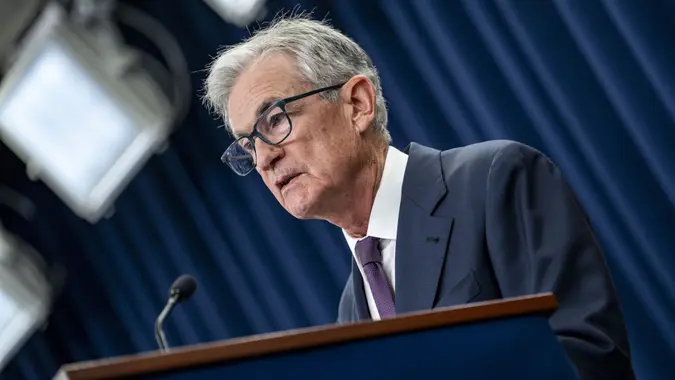Egg Prices Skyrocketed in 2022 — Will Prices Continue To Surge in 2023?

Commitment to Our Readers
GOBankingRates' editorial team is committed to bringing you unbiased reviews and information. We use data-driven methodologies to evaluate financial products and services - our reviews and ratings are not influenced by advertisers. You can read more about our editorial guidelines and our products and services review methodology.

20 Years
Helping You Live Richer

Reviewed
by Experts

Trusted by
Millions of Readers
The grocery sector was hit hard by inflation in 2022, but no single item was struck as hard as eggs. The price of eggs was up 49.1% in November, according to the consumer price index. What caused the drastic price hike and will it continue in 2023?
There are a few reasons why the price of food in general got so high in 2022. The war in Ukraine and supply chain disruptions, for example, both played a part; but eggs were a unique case. The biggest reason costs rose so profoundly in this category is because of a deadly outbreak of an avian flu, which led to the death of 52.7 million birds in the U.S. this year, according to the USDA’s Animal and Plant Health Inspection Service (APHIS).
Egg supply has simply been unable to keep up with demand, and consequently prices have reached astronomical highs. On Dec. 23, Midwest large eggs — the benchmark for eggs sold in their shells — reached $5.46 per dozen, Karyn Rispoli, editor of the Egg Price Current for Urner Barry, told CNN Business. This time in 2021, the price for that same product hovered at around $1.70.
Consumers can likely expect to see egg prices stay high into the new year as the deadly avian flu continues to afflict poultry flocks across the U.S.
“This year, we’ve continued to see flock depopulations throughout the entire year, and there’s an expectation that we’ll continue to see it into 2023,” Brian Earnest, lead economist for animal protein in CoBank, told CNN Business. “We’re going to see a tight supply situation and elevated pricing environment moving forward.”
As of Dec. 29, the avian flu had been detected in nearly 58,000 U.S birds, according to the CDC.
More From GOBankingRates
- Nearly 1 in 3 Americans Hit by a Costly Holiday Scam, Norton Survey Shows -- How To Avoid This
- Here's What the Average Social Security Payment Will Be in Winter 2025
- How Middle-Class Earners Are Quietly Becoming Millionaires -- and How You Can, Too
- The Easiest Way to Score $250 for Things You Already Do
 Written by
Written by  Edited by
Edited by 

























